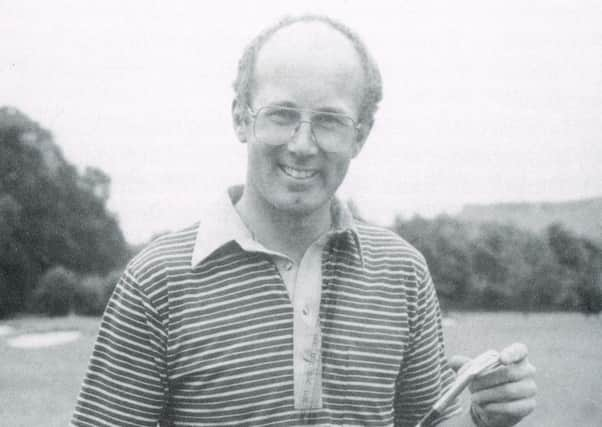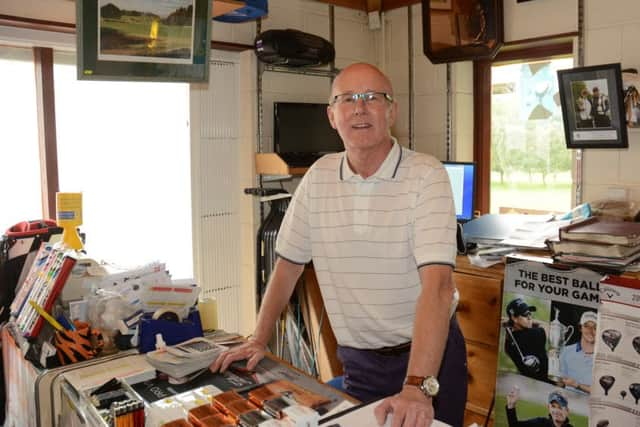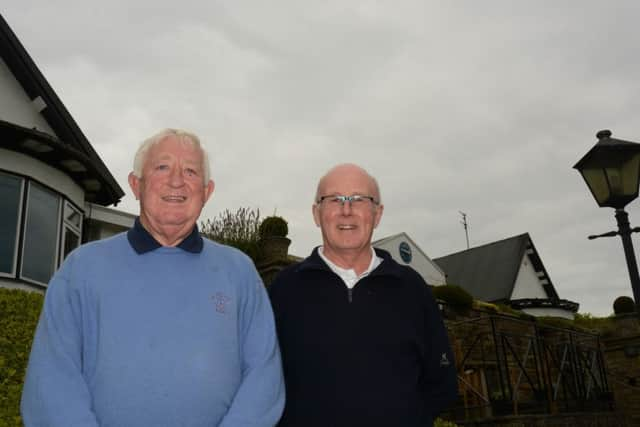Yorkshire golf: John Hammond on his 36 years as a club professional at Ilkley GC


Over lunch at the clubhouse in the days leading up to his retirement, John shared his reflections on a career that has seen him become one of the county’s most popular golfing figures.
John’s early career in golf
I turned professional in February 1971 and went down to Berkhamsted.


Advertisement
Hide AdAdvertisement
Hide AdI was assistant down there for two years and then I start playing tournaments. I won the Coventry assistants’ event and the Douglas Turner tournament the next day.
I was on £7 a week as an assistant, I was 21, and I won £100 for the Coventry tournament and another £100 in the Douglas Turner tournament.
I won £200 in a weekend and I thought, ‘this is all right, this’.
John’s career on the European Tour


I decided I would like to play tournaments as I was getting quite good and I went on the European Tour for the next six or seven years.
Advertisement
Hide AdAdvertisement
Hide AdA gentleman called Norman Wilkinson, who used to work with Layezee Beds and Silent Night, sponsored me for four or five years and Brian Coombes, he gave me a car.
The tournament year began in February with the Safari Tour which started in Nigeria, and then we went to Kenya and Zambia and we would have a five-week tour there.
Then we’d go by car down to Portugal and play at Penina in the Portuguese Open, drive to La Manga to play the Spanish Open, and then the Madrid Open and then the French Open in Paris.
Then we’d come back for the PGA at Wentworth which was the start of the British part of the European Tour.
John and a Spanish kid called Seve
Advertisement
Hide AdAdvertisement
Hide AdIn 1976 I’d finished 20th at La Manga in the Spanish Open and the next tournament was the Madrid Open and I was drawn to play with these two Spaniards, only young kids.
We got to the first, a par-5 uphill and we all hit good drives, but two balls were together and one was about 20 yards further.
Me and the other lad laid up short of the ravine and this young kid just whacked it right over the ravine onto a par-5 in two, which was sort of unheard of then.
This went on and after about six or seven holes I’d had enough of this, and I said to this lad, ‘did you play last week in La Manga? and he said, ‘I play’ I play’ and I said, ‘did you do any good?’ and he said, ‘I finished fifth’.
Advertisement
Hide AdAdvertisement
Hide AdSo I said, ‘did you play at Penina?’ and he said, ‘Yeah, yeah, I finished third’.
He just carried on playing like this for two rounds did this lad and scored two 68s – and then he came over to play in our Open in 76 and of course it was Seve Ballesteros. He was absolutely unbelievable and he nearly won it.
I had a little bet on him and I got good odds.
I played with him a few times in tournaments after that and he was a great lad.
John on the injury which ended his tournament career
In 1978 the last event was the first European Open at Walton Heath and I was lying about 58th in the Order of Merit. The top 60 were exempt from qualifying for the following year so I just needed to do reasonably well to keep my card for 1979.
Advertisement
Hide AdAdvertisement
Hide AdI shot two good rounds to qualify and then the day before I went out to practise and I hit a shot on the practice ground and it was just like someone had stuck a knife in my stomach.
Where your stomach muscle joins your rib cage there is a little bit of cartilage, and I had ripped that – and of course it was disastrous.
I went and had an injection and obviously I couldn’t play, so I told the tournament director there was no chance I could play. But for last place there was £250 – 250 points – and I said could I withdraw and still get those points, but he said, ‘no you have to play’.
I strapped myself up – I was stupid because I really couldn’t play – so I played 18 holes, shot 79, withdrew and got the points. It kept me in the top 60 places for 1979.
Advertisement
Hide AdAdvertisement
Hide AdTwo weeks later I was supposed to go to South Africa for the Safari Tour and I had healed up a bit and I went out to Nigeria to play, but it went again and I had to fly home. I decided it wasn’t going to get any better so I just had to pack in and look for a job.
John on his beginnings at Ilkley GC
I applied for a job at Selby and got in the top three but didn’t get that, but then I applied for the job here at Ilkley and got it, so it was the best thing that could’ve happened really.
The first year I was here, 1979, I was actually exempt to enter every PGA event on the European Tour and I couldn’t play in one of them so it was a bit of a sickener.
I had all sorts of treatment with all sorts of people, but as soon as I started hitting balls again it went.
Advertisement
Hide AdAdvertisement
Hide AdI had to settle into life as being a club professional and it has been great. It has been a two-way thing and works well both ways, I think.
You never know how good you could have got. Obviously I was improving every year, but I would probably not have got to the top by any means because I never really hit it far enough.
But you never know. I was always good around the greens and was always one of the top putters on the tour.
John on starting the game
My Mum and Dad were members at West Bradford, but in those days you could not join West Bradford until you were about 14 – that is what it used to be like in golf clubs. So I played at Filey.
Advertisement
Hide AdAdvertisement
Hide AdI was brought up playing my golf in Filey where we used to go caravanning, when I was about 10.
John on the advance of golf equipment technology
Technology has changed, but the members have always been the same in terms of the characters you see at the golf club. We’ve had some real characters here.
Everybody would give you a fortune if you could make them into a really proper golfer.
I don’t think improved technology has made that much difference to the overall standard of play. It’s given people a lot more distance, a bigger sweet spot on clubs – but when you look at those old persimmon woods, you had to be a proper golfer in those days.
Advertisement
Hide AdAdvertisement
Hide AdIt is the pros who get the extra distance out of the new technology because they swing the clubs with so much speed clubhead speed.
It’s not the normal golfers – if you do a 68 or 69 in the medal you win it still.
The ball’s better too, but I still don’t think the scoring is that much better.
I think one thing that has helped is all the video technology, Flightscope, for instance,is brilliant.
Advertisement
Hide AdAdvertisement
Hide AdIt tells you what flight you’re getting, whether your shaft flex is correct – they are absolutely brilliant
But I think most golfers, if they can hit it further, they’re happy.
If you had a magic wand that could give everyone 10 or 15 yards further you’d earn a fortune – it’s not accuracy they want, it’s distance.
Members will come in and say, ‘John, do you know at the 12th, I hit it 30 yards over the green’. And they’re happy even if it cost them shots.
John on learning to be a good club professional
Advertisement
Hide AdAdvertisement
Hide AdI used to be at Filey and Doug Curry, the pro there, was brilliant. He wasn’t a golfer, but he was a brilliant salesman and he knew every member’s name.
He was a people person and because of that he did well in his sales in the shop and if you are going to get people to buy things you have got to be their best friend and show that interest in everybody.
Doug, he would get a brand new BMW every two years and he had his own number plate. He would get exactly the same model in exactly the same colour and put the same number plate on it so the members didn’t realise he had got a new car.
You’ve not to be seen to be doing too well.
John on former Ilkley member Colin Montgomerie
Colin was here when I was here, but Bill Ferguson was his teacher, and Colin was obviously a good player.
Advertisement
Hide AdAdvertisement
Hide AdWhen I first started, we had a member who was a priest called Paddy Roache. He was a real character.
He would always talk about Arnie and Jack and Lee and then he used to disappear over to America, and apparently he was the priest or chaplain for the Ryder Cup – he really did know all the top players in the world like Arnold Palmer, Jack Nicklaus and Lee Trevino.
Arnold Palmer used to invite him to Bay Hill to play in his pro-am with him every year.
Paddy was the one who got Colin his scholarship in America. He had a word with Arnie, who got him in at Houston and when he came back Colin was an absolutely fantastic player.
Advertisement
Hide AdAdvertisement
Hide AdIf it had not been for Father Roache getting him his place over there I don’t think he would have been the player he became.
Colin has been very good for the club here. He has come and played a couple of exhibition matches with the likes of Peter Thomson and Christie O’Connor.